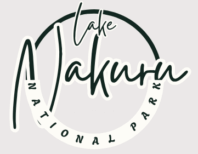To visit Lake Nakuru National Park, start by planning your trip from Nairobi, which is about a 3-hour drive via the Nairobi-Nakuru highway. You can choose to self-drive, hire a tour vehicle, or take public transport to Nakuru town and then a taxi to the park gate. Alternatively, for a quicker option, charter flights are available from Wilson Airport to Naishi airstrip inside the park.
Once there, pay the park entry fees (approximately $60 for non-resident adults) at the gate, and choose between a guided safari or a self-drive adventure. Don’t forget essentials like comfortable clothing, a camera, and binoculars to make the most of the park’s breathtaking scenery, abundant wildlife, and iconic flamingo-filled lake.
Step-by-Step Guide on How to Visit Lake Nakuru National Park
1. Research and Planning
Picture this: a shimmering alkaline lake surrounded by golden savannahs, with pink-hued flamingos painting the shoreline. That’s Lake Nakuru National Park. Nestled about 160 km northwest of Nairobi, it’s not just a park—it’s a vibrant, living postcard. Before setting off, take a moment to understand what makes it special: from its world-famous flamingo spectacle to black and white rhinos casually grazing in open fields.
Best Time to Visit: If you’re like me and prefer dry, dust-kissed trails with wildlife congregating around shrinking waterholes, aim for June to September or January to February. The crisp mornings, clear skies, and abundant animal sightings make it worth the early wake-up calls.
2. Budgeting
Visiting Lake Nakuru can be tailored to any budget. For non-residents, park entry is about $60 for adults—cheaper than a dinner at a fancy Nairobi restaurant but with infinitely better views. If you’re traveling with family, kids get a discounted rate around $35.
Don’t forget to factor in accommodation, food (trust me, snacks are a lifesaver), transportation, and perhaps a splurge on a guided tour—you’ll thank yourself later when your guide spots a well-camouflaged leopard you’d otherwise miss.
3. Arranging Transportation
Getting there is part of the adventure!
- By Road: The drive from Nairobi takes about 3 hours—perfect for a road trip playlist. The Nairobi-Nakuru highway is smooth, but be ready for occasional slowdowns (and maybe a roadside roasted maize snack if you’re feeling adventurous). If you’re driving yourself, a 4×4 isn’t strictly necessary unless it’s rainy, but it sure makes for a comfier ride.
- By Air: Short on time? Charter flights from Nairobi’s Wilson Airport land directly at Naishi airstrip inside the park. It’s quick, scenic, and undeniably cool to arrive safari-style.
4. Choosing Accommodation
Where you sleep can make or break the trip.
- Inside the Park: Waking up to the distant roar of lions is surreal. Try The Cliff Nakuru for luxury with views that’ll have your camera working overtime. Lake Nakuru Lodge offers mid-range comfort with easy access to game drives.\n
- Outside the Park: If you’re budget-conscious, Nakuru town has cozy guesthouses. They’re not safari-chic, but they’re friendly, affordable, and perfect if you plan to spend most of your time exploring.
5. Preparing for the Trip
Here’s what I always pack: light clothes for hot days, a warm jacket because mornings can be nippy (trust me on this), sturdy shoes, sunscreen, and a hat that won’t fly off with the wind. Add binoculars—you’ll want a closer look at that distant rhino—and a good camera, even if it’s just your phone.
Health-wise, carry insect repellent. Malaria’s rare here but better safe than sorry. Keep your vaccinations updated, and if you’re prone to car sickness, the winding descent into the Rift Valley might catch you off guard.
6. At the Park Entrance
Rolling up to the park gate is exciting—like standing at the threshold of an epic story. Have your ID ready, entry fees sorted (card or M-Pesa is easiest), and be prepared for a quick vehicle check.
Park rules are simple: stay inside your vehicle unless you’re in designated spots, no feeding the animals (yes, even if a cute monkey begs), and keep your speed slow—you’re in their home now.
7. Enjoying the Park
Here’s where the magic happens.
- Self-Drive vs. Guided Safaris: If you love the thrill of discovery, a self-drive is fun. But guided safaris? Game changer. Guides have eagle eyes—they’ll spot a hidden leopard where you only see bushes.\n
- Must-See Spots:
- Lake Nakuru: A glittering expanse dotted with pink flamingos—like confetti on water.
- Baboon Cliff: The view here will steal your breath (and maybe your snacks if the baboons get cheeky).
- Makalia Falls: Especially stunning after rains, a perfect picnic spot with the soundtrack of cascading water.
- Wildlife Galore: Rhinos lumbering through grass, elegant Rothschild’s giraffes nibbling treetops, and if you’re lucky, a lion lounging in the sun.
8. Additional Activities
- Bird Watching: Over 450 species, from massive pelicans to tiny sunbirds. Even if you’re not a “birder,” it’s hard not to be impressed.\n
- Photography: The golden hour here feels like nature’s own Instagram filter.\n
- Picnic Sites: Pack snacks, find a scenic spot, and dine with views that no restaurant can match.
9. Exiting the Park
When it’s time to leave, check out at the gate, make sure you’ve collected all your belongings (I’ve left behind more water bottles than I care to admit), and take a moment to soak in the final views. Dispose of waste responsibly—let’s keep the park as beautiful as we found it.
10. Post-Visit Tips
- Share Your Story: Whether it’s a photo dump on Instagram or a heartfelt review online, your experience might inspire someone else to visit.\n
- Support Conservation: If the trip moved you, consider a small donation to support Kenya’s wildlife efforts. Every bit helps.
